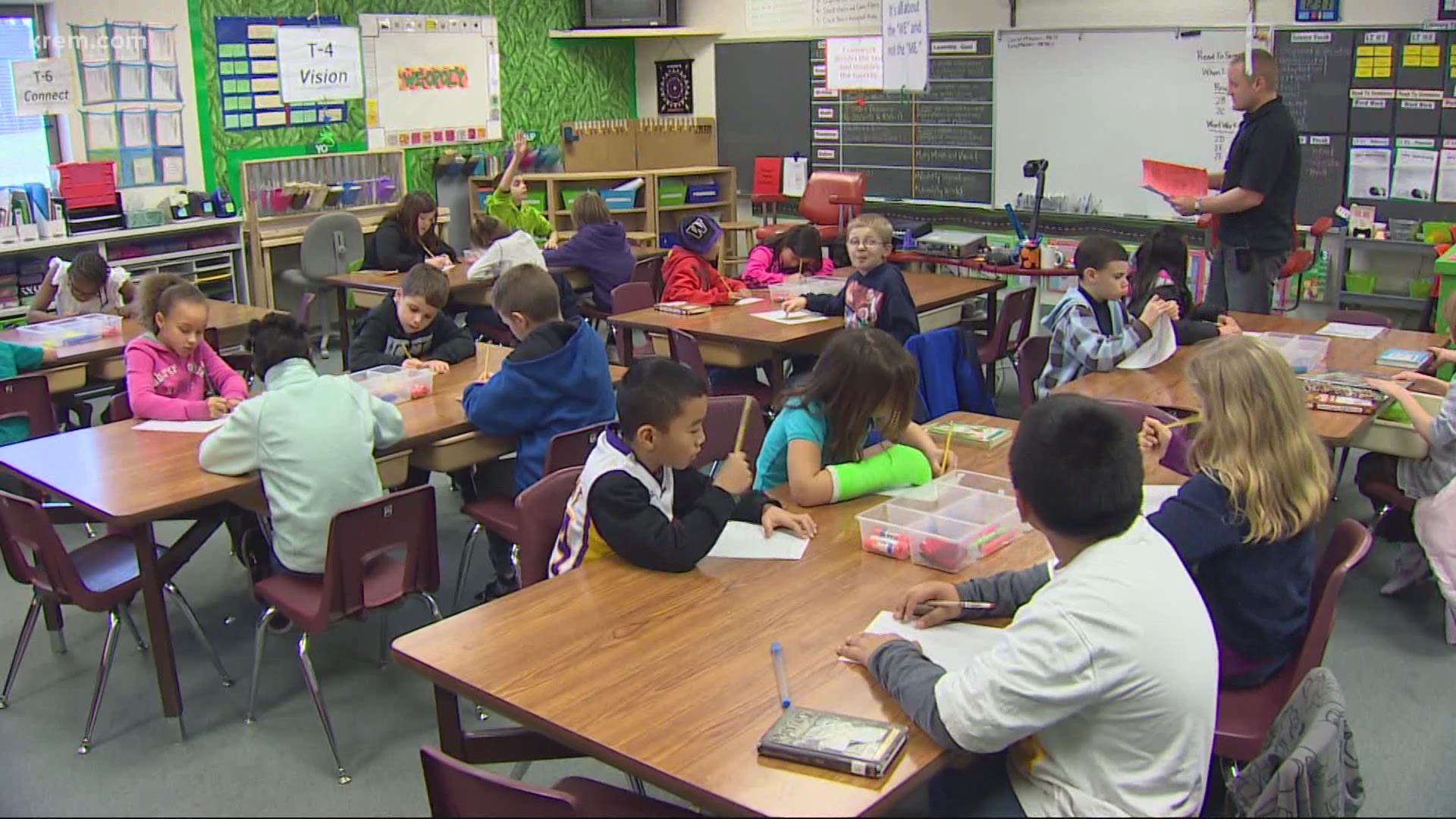SPOKANE, Wash. — If students don't return to school in the fall, it could be detrimental to their health, according to the American Academy of Pediatrics (AAP.)
The AAP released new recommendations last Thursday stating that the harms of distance learning don't outweigh the benefits of limiting the spread of the coronavirus among school aged children.
The AAP states that distance learning has led to social isolation, and makes it difficult for schools to identify learning deficits as well as child and adolescent physical or sexual abuse, substance use, depression, and suicidal ideation.
The Superintendent of Public Instruction of Washington State Chris Reykdal said schools are expected to open for in-person instruction come September. However, Reykdal later clarified that almost every district is expected to have some form of remote or blended learning.
In their newest guidance for educators, health leaders, and elected officials across the country, the American Academy of Pediatrics—or AAP—has made one goal clear: “all policy considerations for the coming school year should start with a goal of having students physically present in school.”
In their latest guidance for educators, the AAP lists a number of physical distancing measures, cleaning and disinfection policies, and other recommendations to help get students safely back to school in the Fall.
Many of the physical distancing recommendations are split up by age group.
Pre-school
The AAP points out “the relative impact of physical distancing among children is likely small,” and include some of the following strategies to protect students and teachers:
Higher-priority strategies:
- Cohort classes to minimize crossover among children and adults within the school; the exact size of the cohort may vary, often dependent on local or state health department guidance.
- Utilize outdoor spaces when possible.
- Limit unnecessary visitors into the building.
Lower-priority strategies:
- Face coverings(cloth) for children in the Pre-school setting may be difficult to implement.
- Reducing classmate interactions/play in Pre-school aged children may not provide substantial COVID-19 risk reduction.
Elementary
Similar recommendations come for elementary school students, especially as children grow more mature and ideas like wearing masks becomes more effective and manageable. However, the impact of physical distancing on preventing the spread of COVID-19 is still considered to be relatively small:
Higher-priority strategies:
- Children should wear face coverings when harms (eg, increasing hand-mouth/nose contact) do not outweigh benefits (potential COVID-19 risk reduction).
- Desks should be placed 3 to 6 feet apart when feasible (if this reduces the amount of time children are present in school, harm may outweigh potential benefits).
- Cohort classes to minimize crossover among children and adults within the school.
- Utilize outdoor spaces when possible.
Lower-priority strategies:
- The risk reduction of reducing class sizes in elementary school-aged children may be outweighed by the challenge of doing so.
- Similarly, reducing classmate interactions/play in elementary school-aged children may not provide enough COVID-19 risk reduction to justify potential harms.
Secondary- Junior High and High School
At this level, the AAP suggests there is a much greater impact of physical distancing in schools, as older age groups interact with more adults, find more freedom, and as the structure of their schooling is usually based on changing classrooms frequently. Here are the recommendations for secondary school student policies:
- Universal face coverings in middle and high schools when not able to maintain a 6-foot distance (students and adults).
- Particular avoidance of close physical proximity in cases of increased exhalation (singing, exercise); these activities are likely safest outdoors and spread out.
- Desks should be placed 3 to 6 feet apart when feasible.
- Cohort classes if possible, limit cross-over of students and teachers to the extent possible.
Ideas that may assist with cohorting:
- Block schedule (much like colleges, intensive 1-month blocks).
- Eliminate use of lockers or assign them by cohort to reduce need for hallway use across multiple areas of the building. (This strategy would need to be done in conjunction with planning to ensure students are not carrying home an unreasonable number of books on a daily basis and may vary depending on other cohorting and instructional decisions schools are making.)
- Have teachers rotate instead of students when feasible.
- Utilize outdoor spaces when possible.
- Teachers should maintain 6 feet from students when possible and if not disruptive to educational process.
- Restructure elective offerings to allow small groups within one classroom. This may not be possible in a small classroom.
You can read the full guidance from the AAP—including policy recommendations on special education, social distancing in busses or hallways, and best approaches for in-school meals - on the American Pediatric Association website.


